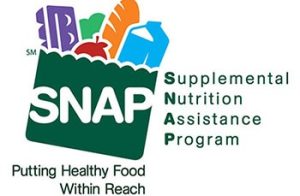Morning report: Corn, wheat struggle amid ongoing Black Sea shipping paces. Plus – more fertilizer insights. (Comments are updated by 7:30 a.m. Central Time.)
Corn down 1-2 cents
Soybeans down 1-3 cents; Soymeal up $1.50/ton; Soyoil up $0.30/lb
Chicago wheat down 1 cent; Kansas City wheat mixed; Minneapolis wheat down 4-6 cents
*Prices as of 6:55am CDT.
Feedback from the Field updates – last weeks of the season! How is harvest progressing on your farm this fall?! Click this link to take the survey and share updates about your farm’s harvest progress. I review and upload results daily to the FFTF Google MyMap, so farmers can see others’ responses from across the country – or even across the county!
My latest FFTF column is live on our site! Soybean harvest is rapidly coming to a close across the country and more and more FFTF respondents are reporting corn harvest as complete.
Responses are starting to slow as many growers are wrapping up for the year, so our time together in FFTF this growing season will also come to an end in the upcoming weeks. So be sure to drop any insights you’d like to share with us from the 2022 season at this link and I will share them on our map as well as in my columns as harvest season winds down. Thanks! -JH
Corn
Corn prices edged $0.01-$0.02/bushel lower during the early morning trading session amid lower energy prices and ongoing harvest pressures. Ukraine continues shipping grain cargoes out of the Black Sea, though total grain volumes are nearly 31% lower than year ago shipping paces.
Soybeans
China is beginning another round of COVID-19 lockdowns to curb virus transmission. The news dimmed demand prospects for edible oils and subsequently weighed the soy complex lower overnight. Soybean prices traded $0.01-$0.03/bushel lower on the sentiments.
“There are big questions about the end of COVID-zero policy in China and seemingly few answers,” Phin Ziebell, agribusiness economist at National Australia Bank, told Reuters. “Markets keep speculating it will end and then it doesn’t end.”
Growing expansion prospects for rapeseed acreage in the European Union also had a bearish impact on soy prices this morning. Crops were planted in favorable conditions, which improves the prospects of good yields next year.
China’s customs administration reported overnight that its soybean import volumes fell to an 8-year low as a late U.S. growing season and issues at the U.S. Gulf due to the Mississippi River problems limited supply availability for Chinese buyers, who were still reeling from Brazil’s production shortfalls earlier this year.
China’s October 2022 soybean imports only registered 152 million bushels, which was 19% lower than year ago volumes. So far in the 2022 calendar year, China’s soybean imports are only 2.69 billion bushels – 7.4% lower from the same reporting period in 2021.
But hog prices are on the rise in China and soybean crush margins are beginning to turn positive for crushers, which could help revive demand prospects for the world’s largest soybean importer. Crush margins returned to the green in October, which bodes well for forthcoming U.S. soybean exports over the next eight weeks.
“Imports should pick up in November and December, but for right now, the market faces a very tight soybean supply situation,” Sitonia Consulting’s Darin Friedrichs told Reuters.
Wheat
Wheat prices were on track for another day of losses, falling $0.01-$0.06/bushel on continued Black Sea shipping. Losses were limited due to production concerns in the U.S. (drought), Australia (flooding), and Argentina (drought).
Weather
I spent the weekend in Northern Illinois/Southern Wisconsin with family! It was very windy all weekend and rained heavily until yesterday. The unsavory weather conditions resulted in a lot of indoor time and Aunt Jack receiving a manicure from a 4-year-old – which is just as colorful as you are imagining. And it is, in my opinion, way more luxury than the hundred-dollar manicures that seem to be all the fashion these days.
We also had a tea party and watched Encanto, because that’s what all the cool grain analysts are doing these days if you’re looking for lifestyle tips to upgrade your marketing game!
There was a lot of corn still standing across the Badgerland and Northwestern Illinois in my weekend treks. The stalk quality looked less than ideal, though with a late season heat wave it also seemed like there were some plants that still may have had some green in the stalks. But even with my worries about stalks, corn yields were widely reported to be better than last year’s across the region, according to my coffee shop intel.
The market thinks that USDA is going to increase corn yields in Wednesday’s Crop Production and WASDE reports. And after hearing more of these favorable harvest reports over the weekend, I’m starting to lean that way myself.
Clear skies and cooler temperatures are forecast for most of the Heartland today following this weekend’s rain showers, according to NOAA’s short-term forecasts. The Northern Plains could see a chance of snow this evening, though any accumulation is likely to be light.
NOAA’s 6-10-day forecasts are now trending cool for the middle of the month across most of the country. Chances for rain will be below normal in the Midwest and Northern Plains, though the Central and Southern Plains are likely to see a near normal to above average change of precipitation during that tie.
Those trends will begin to shift slightly in the 8-10-day outlook. Forecasts during that time are still cool but not quite as chilly as in the 6-10-day forecast. The chances for rain will remain consistent with the 6-10-day forecast on the Central and Southern Plains, but chances for excessive dryness in the Upper Midwest and Plains will recede slightly.
At any rate, that should help close the door on Fall 2022 harvest activity in the Upper Midwest. Some of the showers could benefit Mississippi River levels also, which is good news for grain and fertilizer flows.
Inputs
China has famously banned urea and phosphate exports over the past couple years as the world grapples through COVID-19-releated production slowdowns and supply imbalances. But early this morning, the Philippines announced it would be buying 150,000 metric tonnes (MT) of unspecified fertilizers from China.
The deal has not yet been finalized – and at press time I hadn’t heard any comments on the deal by the Chinese government. The Philippine Trade and Investment Center said in a statement it would purchase the Chinese fertilizers at a $470/tonne price point.
The Philippines also plans on reaching out to Russia, Indonesia, the United Arab Emirates, and Malaysia to source the fertilizer supplies it will need for the upcoming growing season. But if the deal with China goes through it will be significant because it will be the first time China will have shown a willingness to export fertilizer products in the past couple years.
More Inputs
Nutrien, one of the world’s largest fertilizer producers, released its third quarter earnings report last Thursday. The company made a “non-cash impairment reversal of $330 million” in its Phosphate division that caused it to miss its earnings target by a couple cents.
But year-to-date Q3 earnings were still recorded at a record-high $6.6 billion on high volume sales and a strong price environment. Translation – Nutrien made a lot of money this year not just on more farmer purchases, but also on high commodity prices.
A few highlights from the earnings reports that I found relevant to farmers/market watchers:
“Weather has been favorable in North America, and we anticipate that the rapid pace of harvest will support strong fall ammonia demand and normal application rates of potash, phosphate and crop protection products.”
“South American spring crop planting is proceeding with a mix of planting conditions. Argentina continues to be impacted by La Nina-related drought, while planting conditions in much of Brazil have generally been favorable. We expect that Brazilian soybean acreage will increase by 3 to 4 percent, which is also expected to support a proportional increase in safrinha corn acreage.”
“Potash shipments from Belarus are projected to be down 50 to 60 percent and Russia down 20 to 25 percent in 2022 compared to the prior year, in line with our previous expectations. We have lowered our global potash shipment forecast to between 60 and 62 million tonnes in 2022, largely due to the impact of higher-than-expected inventory and cautious buying in North America and Brazil during the second half of 2022.”
“Nitrogen prices continue to be supported by historically high European natural gas prices that have led to significant curtailments of ammonia and downstream nitrogen products. Shifts in global nitrogen trade flows have led to higher US exports and lower import volumes, which we expect will result in a tight North American supply and demand balance entering 2023.”
My key takeaways? Fertilizer inventory in North America is stable – for now. But the E.U./Russia natural gas issues are likely to have the most significant impact on nitrogen supply availably by next spring.
Keep an eye on U.S. fertilizer imports and exports over the next six months. The U.S. produces most of its own fertilizer, but in a tight supply environment, we can’t really afford to be shipping out products that we will need to eventually use.
Financials
The S&P 500 traded up 0.46% to $3,797.00 this morning as markets awaited (hopefully) favorable earnings reports from Lyft, Disney, Adidas, and Occidental Petroleum. There was likely a bit of bargain buying also at play after the S&P 500 tumbled over 3% lower last week following the Federal Reserve’s latest interest rate increases.
What else I’m reading this morning on our website, FarmFutures.com:
Naomi Blohm knows that the best marketing plans have started scenario planning not just for 2022 grain, but also the 2023 and 2024 crops.
Mexico is moving closer to a GMO corn ban – here’s how it could impact U.S. corn farmers.
Roger Wright coaches farmers on how to derive future supply and demand dynamics from USDA’s export inspections reports on Monday.
For those of you who may have missed my Wednesday morning newsletter, my latest E-corn-omics column is about the implications of the recent Brazilian election to U.S. farmers.
AgMarket.Net’s Matt Bennett pencils out 2023 fertilizer break evens and encourages farmers to lock in sales to cover the higher input costs.
Our latest special edition Farm Futures print issue features a series on farmer mental health. It is one of the pieces I am most proud of during my time here, so I cannot recommend checking it out enough!
Morning Ag Commodity Prices – 11/7/2022
Contract
Units
High
Low
Last
Net Change
% Change
DEC ’22 CORN
$ / BSH
6.8
6.7625
6.79
-0.02
-0.29%
MAR ’23 CORN
$ / BSH
6.86
6.8225
6.8475
-0.02
-0.29%
MAY ’23 CORN
$ / BSH
6.86
6.8225
6.85
-0.0175
-0.25%
JUL ’23 CORN
$ / BSH
6.81
6.7725
6.8
-0.02
-0.29%
SEP ’23 CORN
$ / BSH
6.3925
6.355
6.385
-0.01
-0.16%
DEC ’23 CORN
$ / BSH
6.2475
6.215
6.235
-0.02
-0.32%
AR2 ’24 CORN
$ / BSH
6.3025
6.29
6.3025
-0.0225
-0.36%
AY2 ’24 CORN
$ / BSH
6.3325
#N/A
6.345
0
0.00%
JUL ’24 CORN
$ / BSH
6.305
6.305
6.305
-0.01
-0.16%
NOV ’22 SOYBEANS
$ / BSH
14.505
14.43
14.49
-0.025
-0.17%
JAN ’23 SOYBEANS
$ / BSH
14.6075
14.48
14.585
-0.0375
-0.26%
MAR ’23 SOYBEANS
$ / BSH
14.6825
14.5525
14.6625
-0.0275
-0.19%
MAY ’23 SOYBEANS
$ / BSH
14.7575
14.625
14.735
-0.025
-0.17%
JUL ’23 SOYBEANS
$ / BSH
14.78
14.6525
14.76
-0.0225
-0.15%
AUG ’23 SOYBEANS
$ / BSH
14.5875
14.4775
14.58
-0.015
-0.10%
SEP ’23 SOYBEANS
$ / BSH
14.185
14.1025
14.185
-0.01
-0.07%
NOV ’23 SOYBEANS
$ / BSH
13.985
13.91
13.9675
-0.03
-0.21%
AN2 ’24 SOYBEANS
$ / BSH
13.9925
13.95
13.9925
-0.0275
-0.20%
AR2 ’24 SOYBEANS
$ / BSH
13.9075
#N/A
13.9325
0
0.00%
AY2 ’24 SOYBEANS
$ / BSH
13.8575
#N/A
13.8875
0
0.00%
DEC ’22 SOYBEAN OIL
$ / LB
77.57
76.31
77.29
0.12
0.16%
JAN ’23 SOYBEAN OIL
$ / LB
75.07
73.93
74.82
-0.03
-0.04%
DEC ’22 SOY MEAL
$ / TON
421.3
417.1
420.1
-0.3
-0.07%
JAN ’23 SOY MEAL
$ / TON
414.2
410.6
413.6
0.8
0.19%
MAR ’23 SOY MEAL
$ / TON
405.2
401.5
404.1
0.6
0.15%
MAY ’23 SOY MEAL
$ / TON
400.6
397
400.3
1.5
0.38%
JUL ’23 SOY MEAL
$ / TON
399.5
395.7
398.7
1
0.25%
DEC ’22 Chicago SRW
$ / BSH
8.53
8.34
8.4325
-0.045
-0.53%
MAR ’23 Chicago SRW
$ / BSH
8.6925
8.5325
8.62
-0.0475
-0.55%
MAY ’23 Chicago SRW
$ / BSH
8.7675
8.64
8.7275
-0.045
-0.51%
JUL ’23 Chicago SRW
$ / BSH
8.8325
8.6925
8.76
-0.045
-0.51%
SEP ’23 Chicago SRW
$ / BSH
8.82
8.7975
8.82
-0.045
-0.51%
DEC ’23 Chicago SRW
$ / BSH
8.8975
8.8425
8.8975
-0.04
-0.45%
AR2 ’24 Chicago SRW
$ / BSH
8.9125
#N/A
8.95
0
0.00%
DEC ’22 Kansas City HRW
$ / BSH
9.545
9.4025
9.5
-0.0325
-0.34%
MAR ’23 Kansas City HRW
$ / BSH
9.5125
9.3825
9.4725
-0.035
-0.37%
MAY ’23 Kansas City HRW
$ / BSH
9.4475
9.3875
9.4325
-0.0425
-0.45%
JUL ’23 Kansas City HRW
$ / BSH
9.415
9.295
9.35
-0.0475
-0.51%
SEP ’23 Kansas City HRW
$ / BSH
9.3175
9.3175
9.3175
-0.0575
-0.61%
DEC ’23 Kansas City HRW
$ / BSH
9.35
9.35
9.35
-0.055
-0.58%
AR2 ’24 Kansas City HRW
$ / BSH
0
#N/A
9.345
0
0.00%
DEC ’22 MLPS Spring Wheat
$ / BSH
9.54
9.44
9.4975
-0.0475
-0.50%
MAR ’23 MLPS Spring Wheat
$ / BSH
9.6575
9.56
9.6075
-0.0575
-0.59%
MAY ’23 MLPS Spring Wheat
$ / BSH
9.69
9.67
9.67
-0.06
-0.62%
JUL ’23 MLPS Spring Wheat
$ / BSH
9.6675
#N/A
9.7125
0
0.00%
SEP ’23 MLPS Spring Wheat
$ / BSH
9.4225
#N/A
9.495
0
0.00%
DEC ’23 MLPS Spring Wheat
$ / BSH
9.42
#N/A
9.5025
0
0.00%
AR2 ’24 MLPS Spring Wheat
$ / BSH
0
#N/A
9.5075
0
0.00%
DEC ’21 ICE Dollar Index
$
111.17
110.215
110.45
-0.324
-0.29%
DE ’21 Light Crude
$ / BBL
92.71
90.4
91.72
-0.89
-0.96%
JA ’21 Light Crude
$ / BBL
91.55
89.31
90.62
-0.83
-0.91%
DEC ’22 ULS Diesel
$ /U GAL
3.9001
3.834
3.8659
-0.0489
-1.25%
JAN ’23 ULS Diesel
$ /U GAL
3.6941
3.6379
3.6734
-0.0237
-0.64%
DEC ’22 Gasoline
$ /U GAL
2.7401
2.6909
2.6969
-0.0379
-1.39%
JAN ’23 Gasoline
$ /U GAL
2.6502
2.613
2.6177
-0.0312
-1.18%
NOV ’22 Feeder Cattle
$ / CWT
0
#N/A
177.825
0
0.00%
JAN ’23 Feeder Cattle
$ / CWT
0
#N/A
179.625
0
0.00%
DE ’21 Live Cattle
$ / CWT
0
#N/A
151.65
0
0.00%
FE ’21 Live Cattle
$ / CWT
0
#N/A
154.375
0
0.00%
DEC ’22 Live Hogs
$ / CWT
0
#N/A
82.975
0
0.00%
FEB ’23 Live Hogs
$ / CWT
0
#N/A
86.425
0
0.00%
NOV ’22 Class III Milk
$ / CWT
20.79
#N/A
20.88
0
0.00%
DEC ’22 Class III Milk
$ / CWT
20.46
20.43
20.46
0.11
0.54%
JAN ’23 Class III Milk
$ / CWT
19.94
19.83
19.94
0.19
0.96%
Get our top content delivered right to your inbox. Subscribe to our morning and afternoon newsletters!






